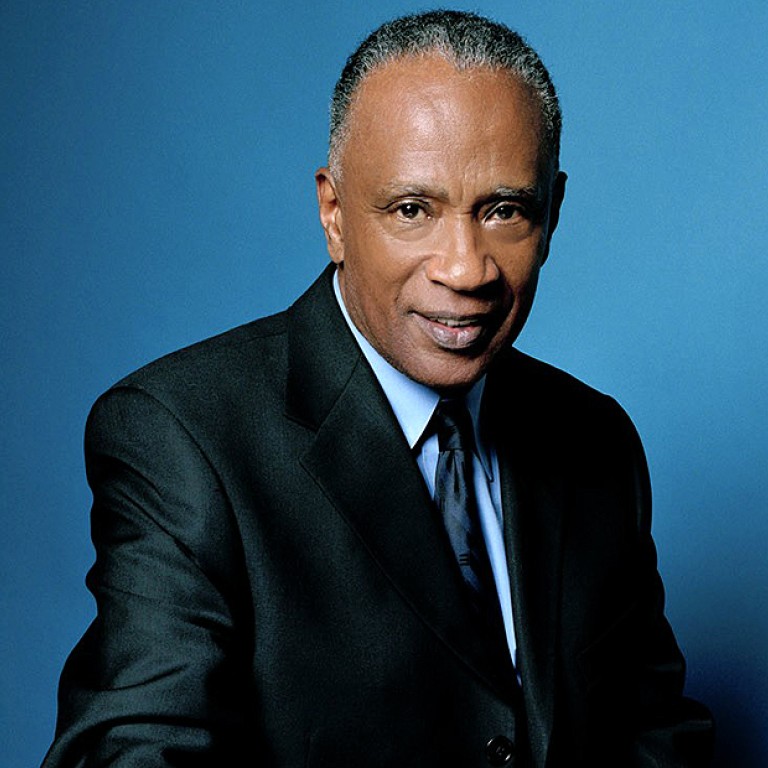
Blue Notes: Vibraphonists
The vibraphone - or vibes - has largely fallen out of favour among jazz musicians, partly because it is large and difficult to move around and because its sound can be imitated, up to a point, by electronic keyboard instruments.
The same is true of the Hammond B-3 organ. Few players are prepared to travel with the cumbersome instrument, and most prefer an imitative keyboard.
However, Joey DeFrancesco insists on playing the real thing, and as a touring musician and prolific recording artist - both as leader and as sideman - he has done much to keep the Hammond sound alive. That makes him the right choice to play with Bobby Hutcherson, at 73 arguably the greatest living exponent of the bluesy, melodic school of vibes playing and not a musician you can replace with a sampler.
Hutcherson is an undervalued soloist who has never achieved the level of public recognition enjoyed by Gary Burton, 71, the other important voice on the instrument to emerge in the 1960s.
As a sideman, Hutcherson has appeared on more landmark albums - mostly on Blue Note - such as Eric Dolphy's , Andrew Hill's , Jackie McLean's , and McCoy Tyner's .
Hutcherson also has many strong albums as a leader on Blue Note, from in 1965 ( was recorded earlier but not released until 1999) to 1977's . He has recorded with other labels but produced most of his best-known work, including his latest, , on Blue Note.
It used to be said the main difference between Blue Note and other jazz labels was that label boss Alfred Lion would pay for a day's rehearsal before the tape started rolling because he wanted to hear the musicians playing together. Don Was, the current label boss and producer of , put together Hutcherson, DeFrancesco, saxophonist David Sanborn and drummer Billy Hart for the sessions. DeFrancesco had previously played with the other three, but Sanborn was new to Hutcherson and Hart.
Was stuck to Lion's rehearsal policy: the day was intended to get everybody comfortable for the proper recording session, but he prudently kept a tape rolling: everything fell quickly into place, and Was wound up using music from the rehearsal on the CD.
"We decided that three of the tunes - Dave's and two of my new songs written for the date, and - were the best takes for the album," says DeFrancesco.
In many jazz groups, the vibraphone used to substitute for a piano - particularly after Burton developed the technique of playing with four mallets to extend its range of chords.
Hutcherson plays in both the four-mallet and two-mallet styles, and although he often has performed what might otherwise have been a pianist's role, he has also worked extensively alongside piano players such as Tyner and Herbie Hancock, and is skilled at leaving as well as filling space.
That ability is also helpful in working with organists, and he has a long history with DeFrancesco. "I've always tried to be the person who is able to fit in with the music and add what I think it needs to top it off," says Hutcherson.
"What I play on the vibes always seems to be the cherry on top of the sundae. You can't play over the organ or the saxophone, which have more power, so I play softer and add to what Joey and Dave deliver. And Billy, he understands that you don't continually play one tempo. There will be the driving force and the automatic cruise where the ideas fall into place and the funky feel to playing behind the tune and the whip like the back of a hurricane and then the sprint to the finish line. Billy knows that."
That's a good description of the dynamics of a fine and funky album.
Three classic albums featuring Hutcherson on the vibraphone.
-
(1964, Blue Note): the title track is the album's tour de force, and Hutcherson establishes himself as the next step forward after Milt Jackson.
-
(1967, Blue Note): although is often cited as the classic Hutcherson album as a leader, and with some justification, this set from two years later shows much greater confidence in himself as composer and instrumentalist.
-
(1982, Original Jazz Classics): arguably the best album of tenor saxophonist Chico Freeman's career. He leads an impressive band which includes Hutcherson and young trumpeter Wynton Marsalis. As a composer, the vibraphonist also contributes his ballad to the session.

